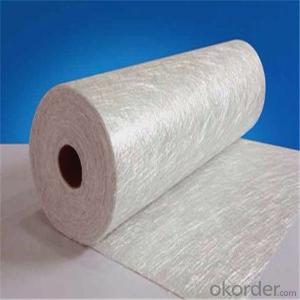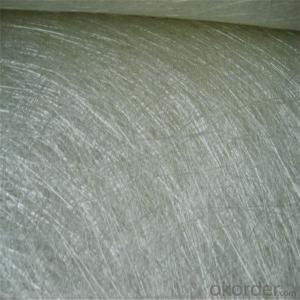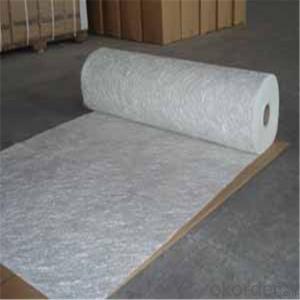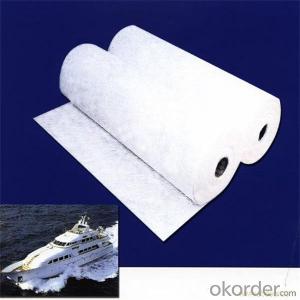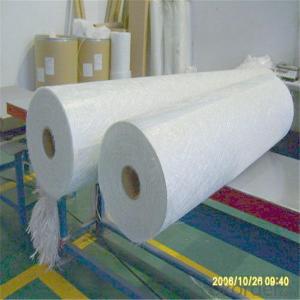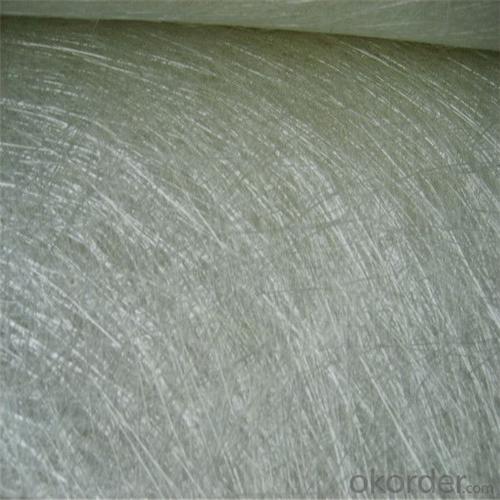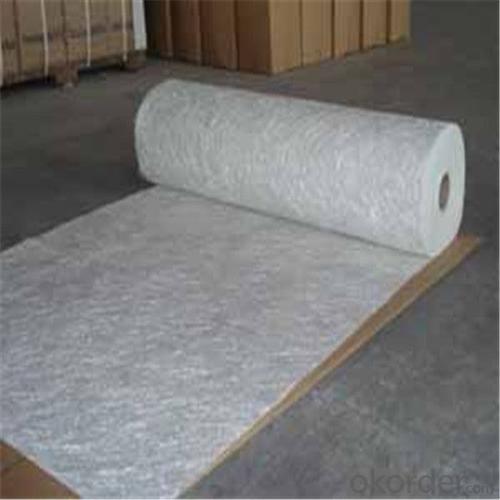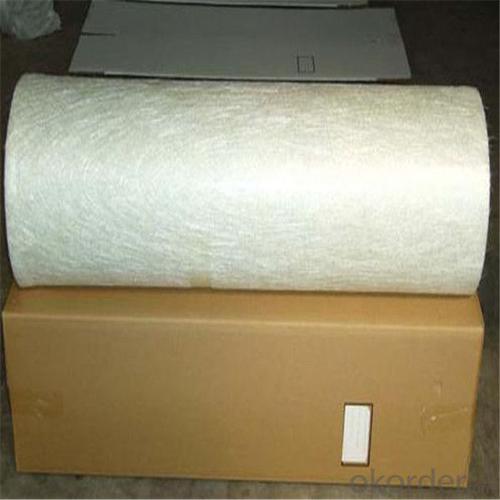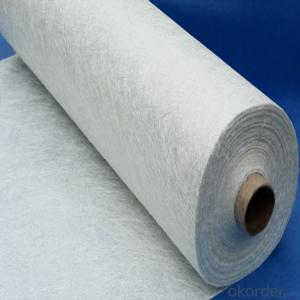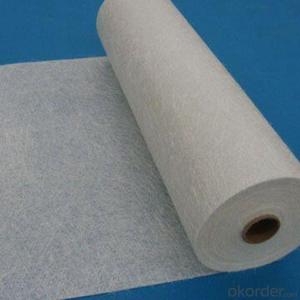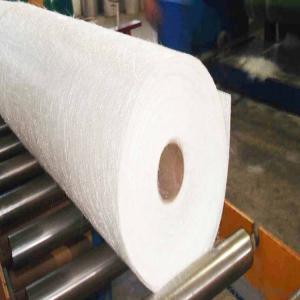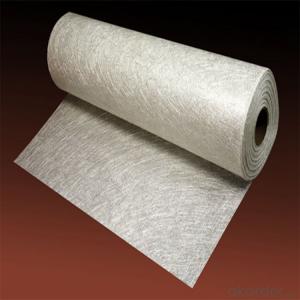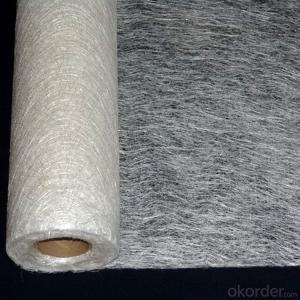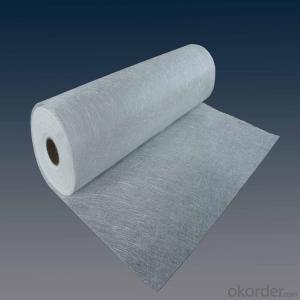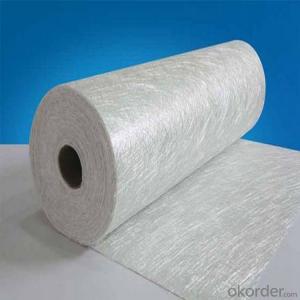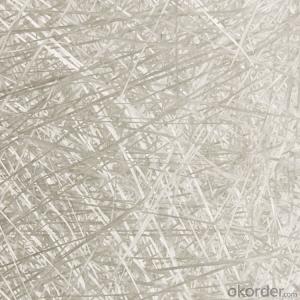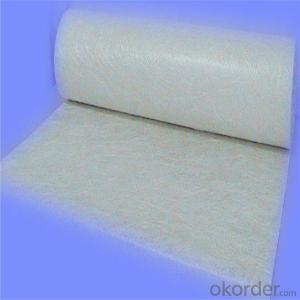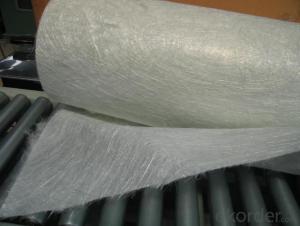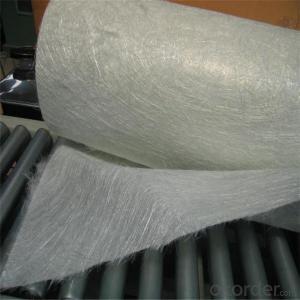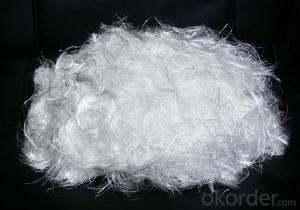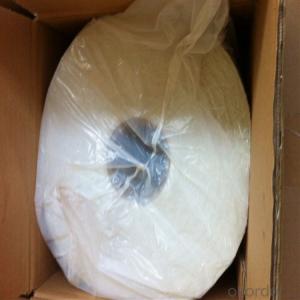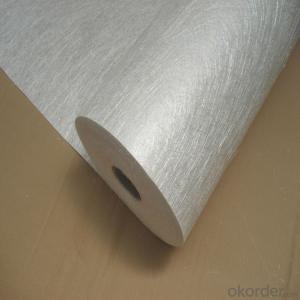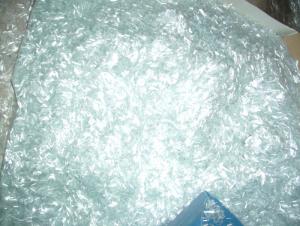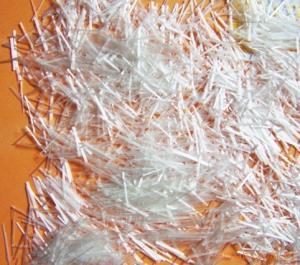2024 e-glass powder chopped stand mats - Chop Strand Fiberglass Roll
- Loading Port:
- Tianjin
- Payment Terms:
- TT OR LC
- Min Order Qty:
- 100 m.t.
- Supply Capability:
- 20000 m.t./month
OKorder Service Pledge
Quality Product, Order Online Tracking, Timely Delivery
OKorder Financial Service
Credit Rating, Credit Services, Credit Purchasing
You Might Also Like
Quick Details
| Technique: | Chopped Strand Fiberglass Mat (CSM) | Dimensions: | 450gsm | Mat Type: | Continuous Filament Mat |
| Fiberglass Type: | E-Glass | Softness: | softness | Place of Origin: | Jiangxi, China (Mainland) |
| Brand Name: | cnbm | Model Number: | 450gsm | color: | white |
| fiberglass type: | E glass | product: | e-glass powder chopped stand mats | binder: | powder or emulsion |
| width: | 1040 or 1270mm, as your requirement | weight: | 30 or 45kg/roll | paper tube diameter: | 90mm |
| outer diameter of roll: | 256mm | packing: | plastic film+carton box + pallet |
Packaging & Delivery
| Packaging Details: | plastic film+carton box + pallet |
| Delivery Detail: | 15-20days |
Specifications
1.e-glass powder chopped stand mats
2.binder:power or emulsion
3.width:1040mm or 1270mm
4.weight:450gsm
Picture
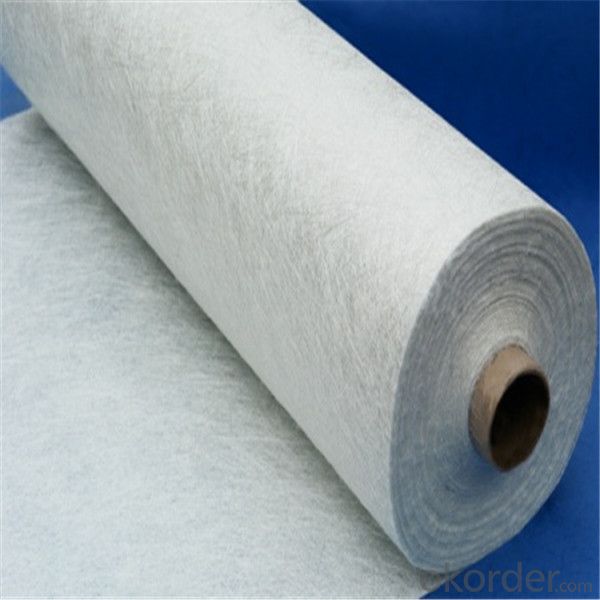

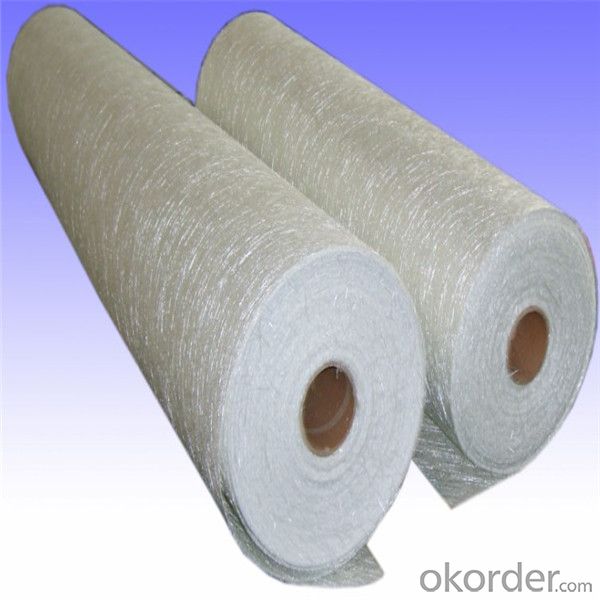

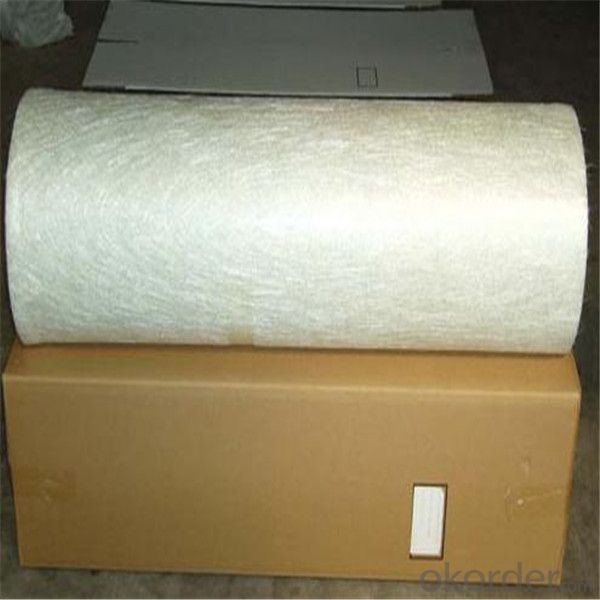
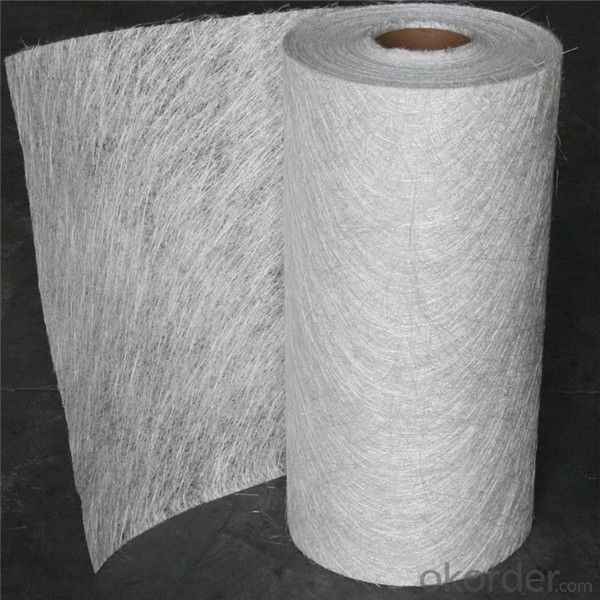
- Q: Is fiberglass chopped strand compatible with phenolic resin?
- Yes, fiberglass chopped strand is compatible with phenolic resin. Phenolic resin is commonly used as a binder in fiberglass products, including chopped strand mats. The resin is able to wet out and bind to the fiberglass strands, creating a strong and durable composite material. The compatibility between fiberglass chopped strand and phenolic resin allows for the production of various fiberglass-reinforced products, such as panels, pipes, and automotive components.
- Q: Can fiberglass chopped strand be used in the manufacturing of sports equipment?
- Yes, fiberglass chopped strand can be used in the manufacturing of sports equipment. Fiberglass chopped strand is a versatile material that offers several advantages for sports equipment manufacturing. Firstly, fiberglass chopped strand is lightweight, which is a desirable characteristic for sports equipment as it allows for ease of use and maneuverability. Whether it's for tennis rackets, golf clubs, or hockey sticks, the lightweight nature of fiberglass chopped strand ensures that the equipment is not cumbersome and helps optimize performance. Secondly, fiberglass chopped strand offers excellent strength and durability. Sports equipment is subjected to significant stress and impact during use, and fiberglass chopped strand provides the necessary strength to withstand these forces. This ensures that the equipment remains in good condition and can perform optimally for an extended period of time. Additionally, fiberglass chopped strand is corrosion-resistant, providing protection against moisture and other environmental factors. This is particularly beneficial for sports equipment that may be exposed to water or harsh weather conditions, such as surfboards or kayaks. Furthermore, fiberglass chopped strand can be easily molded into various shapes and sizes, allowing for the production of customized sports equipment. This flexibility in design is essential to meet the specific requirements of different sports and individual athletes. Overall, fiberglass chopped strand is a suitable material for the manufacturing of sports equipment due to its lightweight, strength, durability, corrosion-resistance, and flexibility. Its use can enhance the performance and longevity of sports equipment, making it a popular choice in the industry.
- Q: What are the different forms of fiberglass chopped strand available?
- There are several different forms of fiberglass chopped strand available on the market. These include: 1. Chopped strand mat (CSM): This is a non-woven fabric made from randomly distributed chopped strands held together with a binder. CSM is commonly used in hand lay-up processes and is ideal for flat or slightly curved surfaces. 2. Chopped strand continuous roving (CSCR): This form consists of continuous strands of fiberglass that are chopped into shorter lengths. CSCR is often used in filament winding, pultrusion, and compression molding processes, providing excellent mechanical properties and high strength. 3. Chopped strand mat with a polyester veil (CSM-PV): This type of chopped strand mat has an additional layer of polyester veil on one side. It offers improved surface finish and reduced print-through compared to regular CSM, making it suitable for applications requiring a smoother appearance. 4. Chopped strand for thermoplastics: Fiberglass chopped strand specifically designed for thermoplastic applications, such as injection molding or extrusion processes. These strands are typically coated with a sizing that enhances adhesion with the thermoplastic matrix. 5. Chopped strand for thermosets: Fiberglass chopped strand formulated for use in thermosetting resin systems, such as polyester, epoxy, or vinyl ester. These strands have a sizing agent that promotes good wet-out and adhesion to the resin, ensuring proper reinforcement. 6. Chopped strand for concrete reinforcement: Specialized fiberglass chopped strands used to reinforce concrete structures. These strands are typically alkali-resistant to withstand the alkaline environment of concrete and improve the durability and strength of the composite material. 7. Chopped strand for insulation: Fiberglass chopped strands that are specifically designed for thermal and acoustic insulation applications. These strands are often processed into insulation batts, blankets, or loose-fill products, providing excellent heat and sound insulation properties. It's important to consider the specific requirements of your application and consult with a fiberglass supplier or manufacturer to determine the most suitable form of chopped strand for your needs.
- Q: Is fiberglass chopped strand compatible with melamine resin?
- Yes, fiberglass chopped strand is compatible with melamine resin. Melamine resin is a type of thermosetting plastic that is known for its excellent chemical resistance and durability. It forms strong bonds with various types of reinforcing fibers, including fiberglass chopped strand. When the chopped strand is impregnated with melamine resin and cured, it creates a composite material that offers enhanced strength, stiffness, and resistance to chemicals, heat, and moisture. This compatibility makes fiberglass chopped strand an ideal reinforcement material for melamine resin-based composites in various industries, such as automotive, construction, and aerospace.
- Q: Is fiberglass chopped strand suitable for automotive interior panels?
- Yes, fiberglass chopped strand is suitable for automotive interior panels. It is a lightweight and durable material that offers excellent strength and dimensional stability. It is also resistant to heat, chemicals, and corrosion, making it ideal for use in automotive applications. Additionally, fiberglass chopped strand can be easily molded into complex shapes, providing versatility in design for interior panels.
- Q: How does the fiber orientation impact the properties of chopped strand composites?
- The fiber orientation in chopped strand composites has a significant impact on their properties. Chopped strand composites are typically made by randomly dispersing short fibers in a matrix material. The orientation of these fibers can greatly affect the mechanical properties, such as strength, stiffness, and impact resistance, as well as the overall performance of the composite material. In a chopped strand composite, the fiber orientation determines the load-bearing capability of the material. Fibers aligned in the direction of the applied load will bear most of the stress, leading to improved strength and stiffness in that direction. On the other hand, fibers oriented perpendicular to the load will have limited load-bearing capacity, resulting in weaker properties in that direction. Moreover, the fiber orientation also influences the anisotropic behavior of the composite. Anisotropic materials have different properties in different directions, and the degree of anisotropy is determined by the fiber orientation. For instance, if the fibers are randomly oriented, the composite will exhibit more isotropic behavior, meaning the properties will be relatively similar in all directions. However, if the fibers are aligned, the composite will be more anisotropic, with properties varying significantly based on the direction of loading. The impact resistance of chopped strand composites is also affected by the fiber orientation. Fibers oriented in the direction of impact can effectively absorb and distribute the energy, resulting in improved impact resistance. On the contrary, fibers oriented perpendicular to the impact direction may not be as effective in absorbing the energy, making the composite more susceptible to damage. In summary, the fiber orientation plays a crucial role in determining the properties of chopped strand composites. By controlling the alignment of the fibers, manufacturers can tailor the composites to meet specific application requirements, optimizing strength, stiffness, impact resistance, and anisotropy to enhance the overall performance of the material.
- Q: Does fiberglass chopped strand improve the impact resistance of composite materials?
- Yes, fiberglass chopped strand does improve the impact resistance of composite materials. The addition of fiberglass chopped strand to the composite matrix enhances the material's ability to absorb and distribute impact energy, making it more resistant to cracking, fracture, and other forms of damage caused by impact forces.
- Q: Is fiberglass chopped strand compatible with vinyl ester resin?
- Yes, fiberglass chopped strand is compatible with vinyl ester resin.
- Q: Is fiberglass chopped strand resistant to extreme temperatures?
- Fiberglass chopped strand is widely recognized for its ability to withstand extreme temperatures. With outstanding thermal stability, this material can endure high temperatures without compromising its mechanical properties. As a result, it is ideal for a range of applications that involve exposure to extreme temperatures, including automotive parts, industrial equipment, and insulation materials. Nevertheless, it is worth mentioning that the temperature resistance of fiberglass chopped strand can differ depending on its composition and manufacturing procedure. Consequently, it is advisable to consult the manufacturer or supplier to ascertain the precise temperature limits for a specific product.
- Q: How does the moisture content of fiberglass chopped strand affect its performance?
- The performance of fiberglass chopped strand can be significantly influenced by its moisture content. Fiberglass is a composite material consisting of fine glass fibers embedded in a resin matrix, which provides strength and rigidity. However, the presence of moisture can weaken the bond between the fibers and resin, resulting in a decrease in overall performance. Moisture in fiberglass chopped strand can give rise to various issues. Firstly, it can lead to a decrease in mechanical properties such as tensile strength, stiffness, and impact resistance. This occurs because moisture weakens the bond between the fibers and resin, reducing the material's load-carrying capacity. Secondly, moisture can cause dimensional changes in the fiberglass. When the material absorbs moisture, it can expand or swell, resulting in warping, distortion, and alterations in shape or size. In industries where precise tolerances are required, such as automotive or aerospace, this can pose a significant problem. Additionally, moisture can contribute to the growth of mold, mildew, or fungi on the surface of the fiberglass. This not only affects the material's appearance but also deteriorates its structural integrity over time. To mitigate the adverse effects of moisture, it is essential to properly store and handle fiberglass chopped strand. It is recommended to store the material in a dry and controlled environment. Moreover, the application of moisture-resistant coatings or treatments can help safeguard the fiberglass against moisture absorption. In conclusion, the moisture content of fiberglass chopped strand directly impacts its performance. It can weaken structural integrity, diminish mechanical properties, induce dimensional changes, and foster the growth of mold or fungi. Therefore, ensuring that the material remains dry and adequately protected is crucial for maintaining optimal performance.
Send your message to us
2024 e-glass powder chopped stand mats - Chop Strand Fiberglass Roll
- Loading Port:
- Tianjin
- Payment Terms:
- TT OR LC
- Min Order Qty:
- 100 m.t.
- Supply Capability:
- 20000 m.t./month
OKorder Service Pledge
Quality Product, Order Online Tracking, Timely Delivery
OKorder Financial Service
Credit Rating, Credit Services, Credit Purchasing
Similar products
Hot products
Hot Searches
Related keywords
